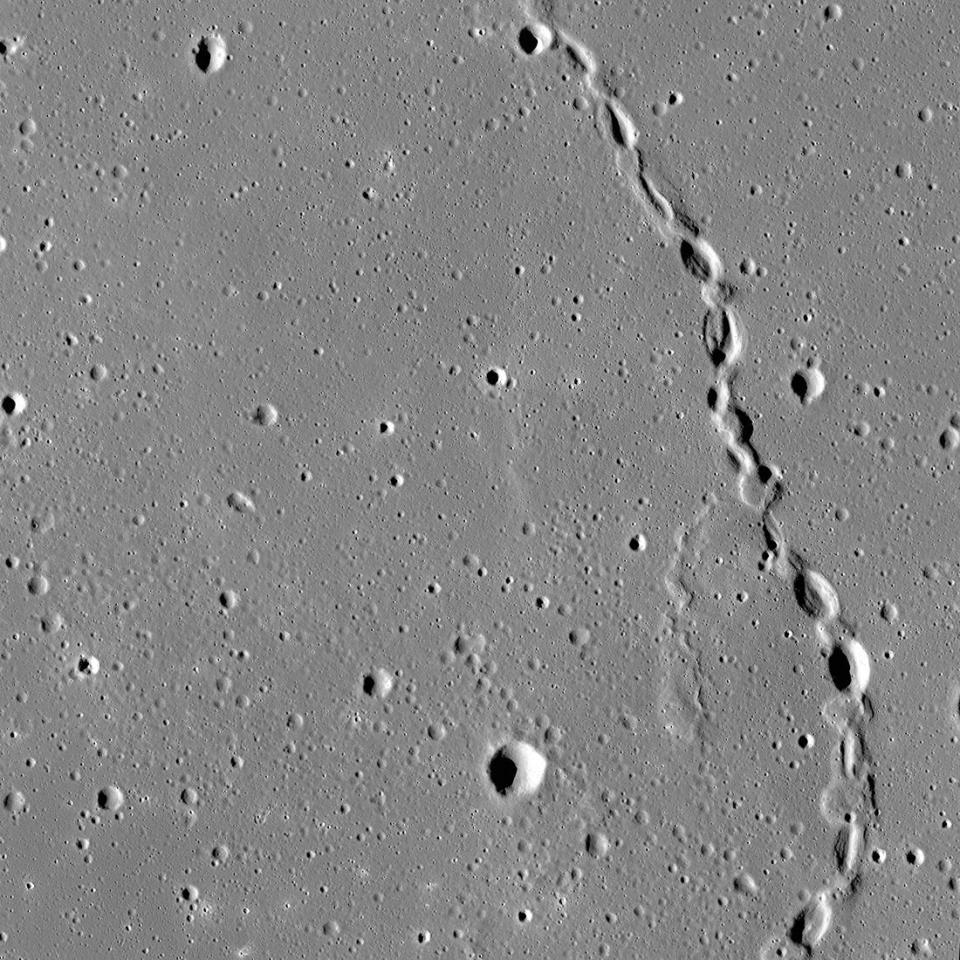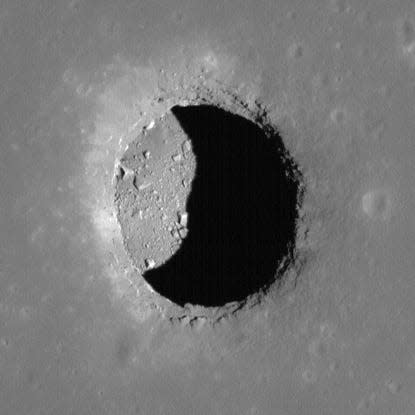-
Scientists have the most convincing evidence yet of an underground cave on the moon.
-
The large cave could be a safe, warm place for astronauts to work and live.
-
The researchers want to use radar technology to identify even more caves under the lunar surface.
In the ongoing effort to establish a permanent base on the moon where humans can live and work, scientists have discovered a possible game changer: a large underground cave.
For decades, scientists have suspected the moon may harbor caves below its surface. Now, a new paper from a team of researchers offers the most convincing evidence yet.
“Lunar caves have remained a mystery for over 50 years. So it was exciting to be able to finally prove the existence,” the authors Leonardo Carrer and Lorenzo Bruzzone of the University of Trento told the Associated Press.
The team speculates that, given how they think this cave formed, there could be hundreds more hidden under the lunar surface. Instead of building homes on the moon, we could inhabit the existing caverns beneath it.
“Caves like this provide natural shelters against harmful radiation, extremes in temperature, and meteorite bombardment,” Wes Patterson, a planetary geologist at the Johns Hopkins Applied Physics Laboratory and a co-author on the study, told Business Insider via email.
“While making caves habitable for astronauts would still require bringing materials from Earth, the task would be far easier and more cost-effective than having to build habitats on the surface,” he added.
How such a large cave formed on the moon

Judging from the data, the researchers estimate the cave is about 150 feet wide and up to 260 feet long, which is slightly smaller than an American football field with the end zones cut off.
The cave sits deep within a pit called the Mare Tranquillitatis pit, which most likely formed when a lava tube collapsed. The moon has no active volcanoes today, but billions of years ago, its surface was covered with lava that flowed down and through valleys, carving tubes across the lunar surface.
Over millennia, some of those tubes became unstable and collapsed, creating pits such as the one the research team studied from radar images taken by NASA’s Lunar Reconnaissance Orbiter. We don’t have a clear picture of what the caves look like inside, but lava tubes such as those in Hawaii can offer some idea.
NASA’s LRO has identified more than 200 of these pits on the moon, suggesting there could be hundreds of underground caves, too. The researchers reported in the paper, which was published Monday in the peer-reviewed journal Nature Astronomy, that these caves could offer future astronauts protection against the extreme conditions on the moon’s surface.
The pros and cons of living in moon caves


Because the moon has no atmosphere to help regulate climate, its surface has drastic temperature swings. During the day, the sun’s heat bakes the lunar surface to about 250 degrees Fahrenheit, and at night, it can dip below -200 F.
But in underground caves, the temperature would be both consistent and, as indicated by past research, very comfortable.
In a 2022 study of the same region — Mare Tranquillitatis — a separate team of researchers used computer simulations to suggest that permanently shadowed regions within these lunar pits, and any adjacent caves, would remain at about 63 F.
“These caves would provide an environment where temperature is much easier to control,” Patterson said.
Reaching these pits and caves is another matter. The cave inside Mare Tranquillitatis is more than 400 feet from the surface near the bottom of a steep slope lined with loose debris.
Getting up and down that slope would require some technological ingenuity, whether it’s jet packs that can fly us in and out, some type of lunar elevator that can shuttle people up and down, or something else.
To the moon cave and beyond


Radar technology could help scientists identify even more caves and tubes extending from open pits on the moon’s surface. In the future, a spacecraft with a higher-resolution radar could even map the interior of all the pits LRO has identified, the Nature paper says.
Such a “complete survey” would allow them to assess the best locations for further exploration and future moon bases, the researchers wrote.
There’s also a chance that moon caves harbor water, a crucial resource for any future moon bases.
Scientists have long known there’s frozen water on the moon — just under its surface, in its permanently shadowed craters, and even in lonely H2O molecules sprinkled across the sunlit lunar dirt, less moist than the Sahara Desert.
Since underground caves are shielded from the merciless vacuum of space and the radiation of the sun, they could have water or ice, Bruzzone told the Australian Broadcasting Corporation.
Access to lunar water is key to NASA’s plans to establish a permanent base on the moon and, eventually, use it to hopscotch astronauts to Mars. Water wouldn’t just be for drinking; it could also be broken down into its elementary components — hydrogen for rocket fuel and oxygen for breathing.
Bruzzone and his coauthors also noted that caves and lava tubes of different ages might act like fossilized records of the moon’s history. Eventually, exploring them up close could help scientists better understand volcanic activity.
Read the original article on Business Insider
Source Agencies

